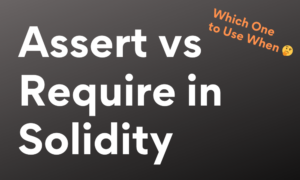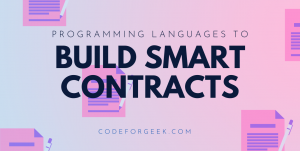A digital artwork was sold at Christie’s for a mammoth $69 million that is £50 million; but the bid winner isn’t getting a painting, sculpture, or even a print.
What they get is a unique digital NFT token.
So, let’s get to know NFTs better via this blog today!
What are NFTs?
NFTs are known as non-fungible tokens. Non-fungible tokens have been in the news a lot lately and catching quite a lot of buzz! It is most popular in the art and music spheres. So, what are NFTs?
NFTs are an extravagant way of saying digital assets as unique.
Now, in economics, fungible assets are something with units and can be interchanged. For example, if I had a ₹1,000 note, I could interchange it with ₹500 notes and still have the same value.
However, when something is referred to as non-fungible, this becomes difficult. An NFT is unique and this means it cannot be interchanged with something else.
An NFT could be a house, a painting, a sculpture, or any collectibles; or maybe even a tweet, that is one-of-a-kind! Moreover, NFTs are today being hyped as a digital solution to collectibles.
You could capture a picture of a painting or maybe even buy a print however there is going to ever be just one original painting.
In simple words, NFTs are referred to as “one-of-a-kind” assets in the digital world that you can buy and sell like any other piece of property. However, they do not have any tangible form of their own and are digital!
How do NFTs Work?
Traditional artworks like paintings and sculptures have their value majorly because they are one-of-a-kind.
However, it is easy to duplicate digital files endlessly, without any effort. NFTs, let us tokenize artworks to create a digital certificate of ownership, that can be bought and sold.
In the case of cryptocurrency, a record of the transactions is stored on a shared ledger, which is known as cryptocurrency blockchain. These records cannot tamper as the ledger is shared and maintained across thousands of computers around the world.
A copy of the transaction is shared across these computers making it difficult to change the information. When a change is made, all these computers must agree to them to be able to execute those changes. This makes the cryptocurrency blockchain highly secure.
For more information on cryptocurrency blockchain, click here to read this blog.
How to Make and Sell your Own NFT?
Want to try your luck in NFTs? Let me brief you with ways you too can make and sell your own NFT! Read on to find the steps below.
Get Some Cryptocurrency (ETH)
To get started, you will first need to pay for a platform to generate or mint your NFT. Most platforms accept Ethereum, the largest cryptocurrency after Bitcoin and much similar to it.
You can opt for popular NFT marketplaces like OpenSea, Rarible, SuperRare, Foundation, Atomic Market, Myth Market, BakerySwap, and more.
To buy Ethereum, you will need a cryptocurrency wallet, where you can buy it and store it in your digital wallet.
Connect your Crypto Wallet to the NFT Marketplace
Now that you have some Ethereum in your wallet, it’s time to spend it. Choose your preferred NFT trading platform and connect your wallet to it.
Complete the formalities and you are good to go!
Upload you File
Yay! You are now ready to create your NFT! Upload your file on the platform that you wish to convert into an NFT. On some platforms you can choose to create a single one-off work or, you may choose to sell the same item multiple items.
Most platforms accept file types like PNG, GIF, WEBP, MP4, or MP3.
Set Up an Auction
Here’s the important part of this step-by-step guide.
On some NFT platforms, you can set a fixed price that allows you to set a price and sell it to someone instantly. You may also go for an unlimited auction, where people go on bidding on your NFTs until you accept one.
Lastly, a timed auction is a type of auction that takes place only for a certain time.
Here comes the tricky part; setting the minimum price. If your minimum price is too low, the massive gas fees will gulp up your profit and leave you with nothing but pennies or maybe even losing money overall.
Set up your NFTs auction and don’t forget to give it a nice description.
Pay the Fees
Now comes the final part, paying the platform and Ethereum gas fees.
Here are a few warnings that you must keep in mind when trading NFTs online.
On most platforms, the listing may seem low when you first begin with. Going ahead, you are made to agree to pay a further fee to actually generate your NFT.
Later, if someone buys your NFT, you will be charged a commission fee and transaction for transferring the money from the buyer’s wallet to your wallet on sale.
Some NFT marketplaces do not really make it clear to users about these charges, however, it is still advisable you read their procedures, terms, and policies.
Conclusion
This article will help you get a basic understanding of what NFTs are and how you can create and sell your own NFTs. If you are an artist, photographer, musician, singer, dancer, graphic designer, dancer, or videographer and wish to get started with making money with NFTs, then this guide is for you 😊
Happy NFTing!
Noteworthy References
- What are NFTs – BBC News
- The Verge
- Make & Sell NFTs – Creativebloq
- Influencer Marketing Hub
- Tweet Auction





